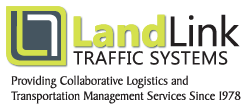We have been writing extensively on the topic of the digital supply chain revolution in recent blog posts. Digital transformation is now the overriding priority for most manufacturers and retailers, with the adoption of digital technologies aimed at improving efficiency and effectiveness in the shorter term while providing the opportunity to grow a leaner operational protocol in the future. The focus is definitely on the efficiency of operations relating to technological applications as we enter 2020. The big question is; are you ready? If not, perhaps we can help. Here are some interesting predictions from a reputable international research firm, IDC, which highlights key areas of technological applications regarding the impending digital revolution of the international supply chain.
- Prediction 1: By the end of 2021, half of all manufacturing supply chains will have invested in supply chain resiliency and artificial intelligence, resulting in productivity improvements of 15%.
- Prediction 2: By 2022, firms will dedicate 35% of their logistics business process outsourcing services budget to process automation, focusing on order, inventory, and shipment tracking.
- Prediction 3: By the end of 2020, half of all large manufacturers will have automated supplier and spend data analysis, resulting in a 15% procurement productivity gain.
- Prediction 4: By 2023, supply chain micro-application extensions will account for one-third of all new technology investments in manufacturing and retail.
- Prediction 5: By 2023, 65% of warehousing activities will use robots and situational data analytics to enable storage optimization, increasing capacity by over 20% and cutting work order processing time in half.
- Prediction 6: To lessen stress on the service supply chain, by 2023, 25% of OEMs will leverage blockchain to source spare parts, improving accuracy of usable parts by 60% and lowering expedite costs by 45%.
- Prediction 7: By 2023, 60% of G2000 manufacturers will invest in AI-infused robotic process automation to automate tasks through increased productivity and address supply chain skills deficit.
- Prediction 8: By 2024, 75% of all consumer-facing companies will have developed the ability to customize at scale within their supply chains, resulting in, on average, a 2–3 percentage point increase in market share.
- Prediction 9: By 2022, the number of companies offering flexible warehousing options will have increased by 50%, which can help address seasonal demand challenges and lower fixed overhead costs by over 20%; and
- Prediction 10: By 2024, for transparency and efficiency, 40% of customs agencies will join private blockchain and API-powered trade platform ecosystems to achieve a 50% increase in cross-border compliance.
This is a lot to absorb in this short article, but it should be considered seriously by those intending to be operationally competitive in the logistics market moving forward. As we consider the supply chain in 2022 and beyond, it is about how we plan to use technology to advance our efforts to better solve business problems and to take advantage of new opportunities. Whether it's Artificial Intelligence allowing to make faster decisions or the Internet of Things providing us with different kinds of data we did not have before, or potentially things like block chain giving us a more reliable data set, we need to get a handle on several aspects of, not only the technology itself but, the specific applications.
Artificial Intelligence Understand what it is. The abbreviated Wikipedia definition is "any device that perceives its environment and takes actions that maximize its chance of successfully achieving its goals." Simply put AI is a machines ability to learn from doing the same repetitive task. Some simple examples include trash and recycling pickups and bus roots. Both are examples of repetitive tasks. AI would allow robots to learn the repetitive routes and stops. Eventually the robot could safely take over the operation of the equipment safely and completely.
Internet of Things We have blogged about this topic in several articles because we see it as a significant technology in the future of supply chain management. Again, the Wikipedia definition is "a system of interrelated computing devices, mechanical and digital machines, objects, animals or people that are provided with unique identifiers and the ability to transfer data over a network without requiring human-to-human or human-to-computer interaction. Simply put, IOT is a network of machines which are programmed to communicate and perform operational transactions with one another.
Block Chain Technology Block chain is something we are very supportive of because of its ability to provide a rock solid audit trail of commercial transactions. According to Wikipedia block chain technology is a system of interrelated computing devices, mechanical and digital machines, objects, animals or people that are provided with unique identifiers and the ability to transfer data over a network without requiring human-to-human or human-to-computer interaction. You'll notice a familiar theme in these Wikipedia definitions in that they are purposefully eliminating the human interaction in every transaction. That is not by mistake. Block chain is the accounting leg of the supply chain revolution to improve accountability in domestic and international commerce. AI and IOT address operational efficiencies. Block Chain addresses the numbers.
The digital revolution is something for which we all need to be prepared. The trick is understanding the technology and how much of it you may need for your particular operation. Firms are in a panic to do carpet bombing to stay ahead when a slow methodical approach may be most effective.
Contact Land Link Traffic Systems today to review your current supply chain management protocols. Let's learn together what may be the best technology fit for your organizations technological implementation goals.


 Land-Link, a well respected professional organization, has been providing its clients with effective transportation and logistics solutions since 1978.
Land-Link, a well respected professional organization, has been providing its clients with effective transportation and logistics solutions since 1978.

